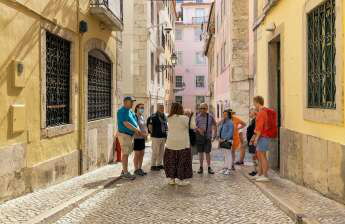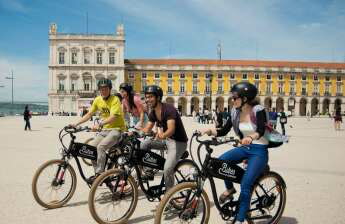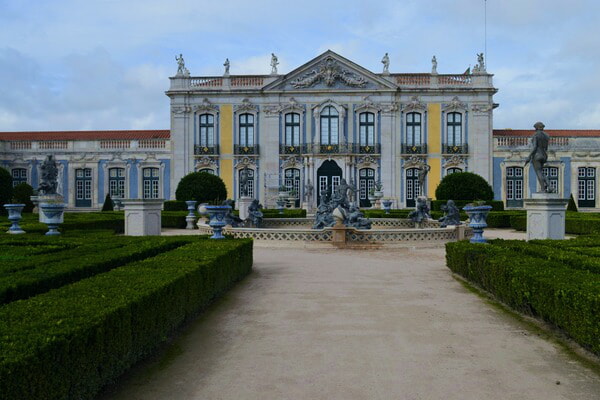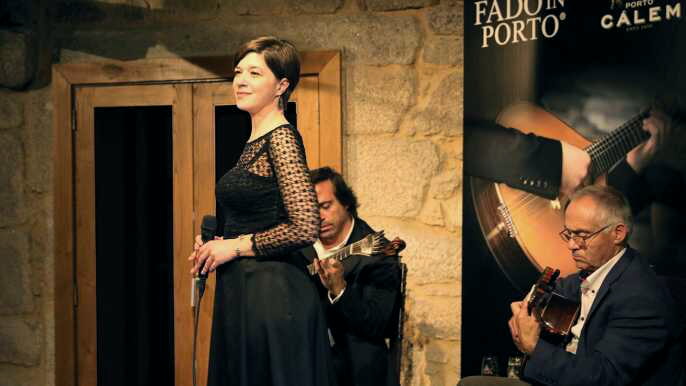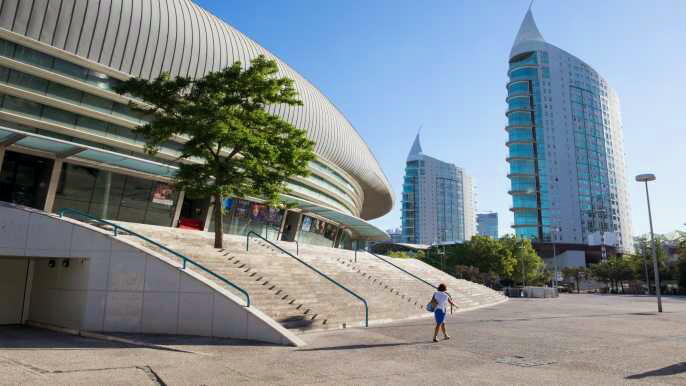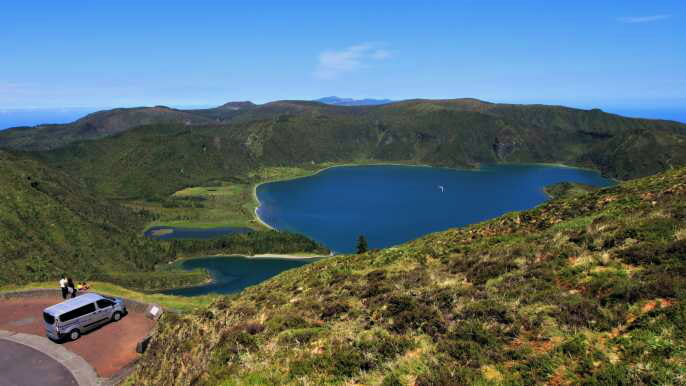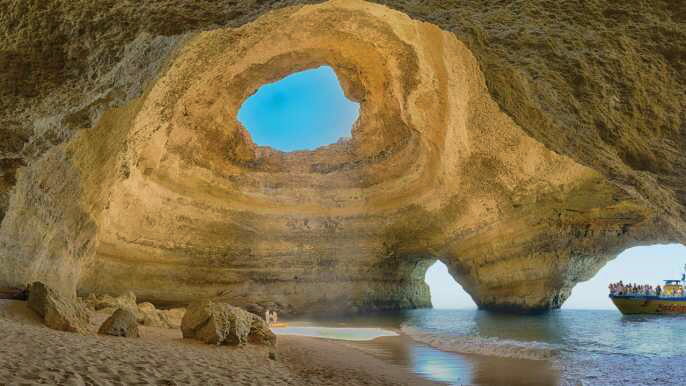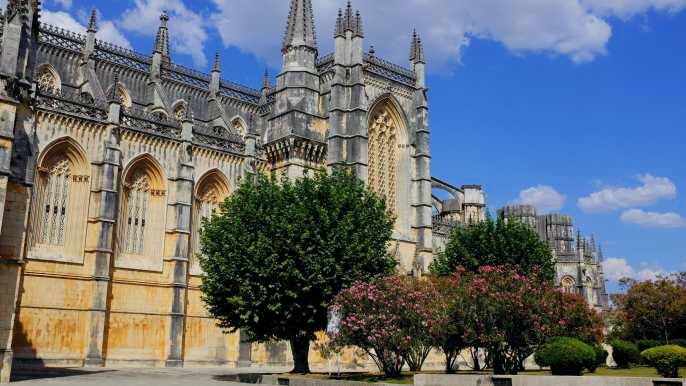Whether you're visiting the city for the first time or you've already been there many times, there are still several great places to visit in Lisbon. The Portuguese capital is located on a hilly coastal area and is home to a number of historic sites. These include the Castelo de Sao Jorge, the Time Out Market, and the Museu Nacional do Azulejo.
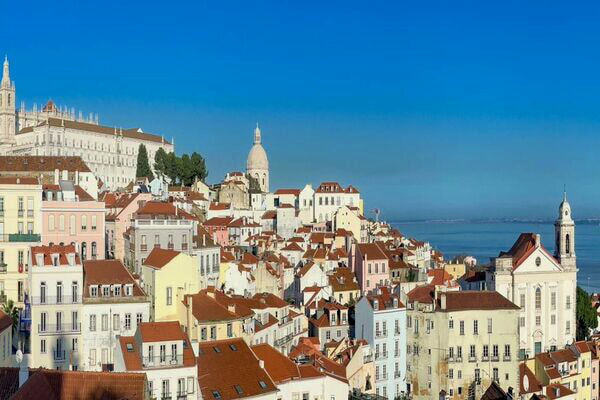
Alfama
Located near the center of Lisbon, Alfama is one of the city's most interesting districts. This is where you'll find the oldest buildings in the city, including the Cathedral.
Besides its historic sights, this district is home to some of Lisbon's most famous attractions. It's also a great place to relax and unwind.
Whether you want to shop for antiques or eat traditional Portuguese cuisine, you can do so in one of the many restaurants in Alfama. These are small, intimate places where you can enjoy good food and a local wine.
Besides its history, Alfama is also known for its fado music. The origins of this traditional Portuguese genre can be traced back to the area. If you're into this type of music, make sure to visit the Fado Museum. The exhibits tell the story of the national song.
You can also find many churches in the area. Among them are the 16th-century monastery of Sao Vicente de Fora. Another must-see is the Church of Santa Engracia, also called the National Pantheon. This church is the final resting place of many important Portuguese figures.
You'll find plenty of fado music venues in Alfama. You can even stay in a fado house. There are many bars and cafes in the neighborhood, too.
You can take a tram to Alfama, which is the best way to get around. The number 28 route runs through the streets of the district, passing by some of its most interesting landmarks.
Castelo de Sao Jorge
Located on a high hill overlooking Lisbon, the Castelo de Sao Jorge is a popular landmark. This fortress, which has been in existence for many centuries, has a lot to offer visitors. The area has excellent views of the city and has been occupied by a variety of people, including Romans, Moors and Portuguese. The castle is also home to an archaeological site.
The museum in the castle contains a multimedia exhibition that displays what was uncovered during excavations. There is a large display of archeological finds, and the museum also has a periscope that provides a 360 degree view of the city.
Another interesting feature of the tower is the camera obscura. This is a device that allows visitors to see a panoramic image of the city, and is actually a precursor to modern-day photography. The tower's walls have also been made into a walkway, which is accessible by staircases.
There are also guided tours of the archaeological site. These are held between 10:30 am and 5 pm. The ticket price includes the tour. The periscope provides a comprehensive guide to the site, including a description of the main sights. The guided tour lasts about 15 minutes.
There is also a garden in the castle. This has several beautiful lookouts and features cork oak, umbrella pine trees and strawberry trees. It's also home to a couple of beautiful peacocks.
Museu Nacional do Azulejo
Located in an old convent, the Museu Nacional do Azulejo is one of the best museums in Lisbon. Here you'll find every kind of azulejo imaginable, from intricate Goan designs to food-inspired azulejos.
The museum is open Tuesday through Saturday. Visitors can enjoy a self-guided tour of the church or take a guided tour of the museum. The church has a beautiful interior with gilded wood and a paneled ceiling. It's also home to the largest collection of Portuguese tile in the country.
Founded in 1509, the Madre de Deus convent is an important part of Portuguese architecture and history. The building has a stunning interior, including a baroque altarpiece and a paneled ceiling.
The convent is also home to the Azulejos museum, which exhibits azulejos from the past five centuries. You'll find works by Portugal's most famous ceramic artists, such as Julio Pomar and Rafael Bordalo Pinheiro.
The Museu du Oriente, meanwhile, focuses on Asian art. This is the place to be for events that explore this fascinating culture.
The National Tile Museum, on the other hand, is a must-visit for history buffs. It's located in a former 16th-century convent. You can take a guided tour of the museum, which includes a visit to the Madre de Deus church. The museum has a beautiful Renaissance cloister and a large tile collection.
Another must-see is the Museu Colecao Berardo, which opened to the public in 2011. This is a private collection owned by billionaire philanthropist Jose Manuel Rodrigues Berardo. The collection has over 1,000 individual pieces of modern art, such as a Picasso painting and Andy Warhol's Judy Garland portrait.
Miradouro da Senhora do Monte
Located at the highest point of the city, the Miradouro da Senhora do Monte is an ideal spot to enjoy a panoramic view of Lisbon. It is in the Graca district, which is also home to the 16th century Sao Vicente de Fora Monastery.
Besides offering an unobstructed, 250 degree view of the city, the Miradouro de Senhora do Monte is a great spot for taking pictures. The churchyard contains an image of Our Lady of the Mount and a chapel, both of which are worth a visit. The chapel is particularly popular with pregnant women, who are said to get divine protection here.
Another popular spot in the city is the Miradouro de Santa Catarina. It is a hidden gem that attracts tourists of all ages. It is a great place to watch the sunset and listen to street musicians. The area is bustling with colorful city trams.
There are other interesting viewpoints to explore in the city. The most notable one is the Vasco de Gama Tower, which has an interesting architectural design. It is also an important landmark in the country's history. The tower is a five-story building with a narrow spiral staircase that leads to its top floor. The tower is open daily.
Other viewpoints include the National Pantheon, which is a domed church built in the 16th century. The Roman Theater, which is archeologically significant, is a former Roman theater.
Carmo Convent
During the medieval times, Carmo Convent is considered as one of the best buildings in the city. The ruins of the church are used for exhibiting the stone art of the time. These ruins also show the medieval graves. The church is located in the Chiado district of Lisbon.
In 1404 Nuno Alvares Pereira gave all his wealth to the Carmelite convent. He was the Constable of Portugal under King Joao I. He had great religious beliefs. He was also a military expert. He was an excellent battle hero. He won the throne of Portugal in 1385 after a major victory.
After the great earthquake, most of the people in Lisbon were in the church when it hit. However, the roof collapsed. The church was later converted into a museum. It is now called the Museu Arqueologico do Carno.
The museum contains a private collection of Portuguese archaeologists. It displays a wide variety of artefacts. It includes items from the region, including the tomb of a 16th century Peruvian mummy. It also contains pieces of artistic interest. A 15-minute video will guide you through the history of the convent.
The museum is open from 10 am to 7 pm. It is worth a visit. You can also go on a guided tour. You can also take a cruise along the Tagus River. It is an ideal way to explore the city.
Time Out Market
Located in the Cais do Sodre neighborhood of Lisbon, the Time Out Market is one of the best places to visit in the city. It is a food hall and cultural center that brings together the best of the city's food, drink, and cultural experiences.
In addition to the traditional food market, there is also a music venue, a flower shop, and a dozen restaurants. The main building is a former farmers market. The kiosks are run by the area's top chefs, including Michelin-starred chefs and northern-born chefs.
The food market is a great place to find delicious Portuguese food and drink. There are more than 50 vendors. There are some that have bar seating.
You can also take a cooking class here. Many of the restaurants offer local specialties. Several restaurants serve sardines. Some offer a great sea bass salad with seaweed.
There are also some vegan curries and pizzas. For dessert, you can try the Santini, an Italian ice cream in a wafer-biscuit cone. You can also find a great fruit and vegetable market.
There are other offbeat options. The Mercado de Campo de Ourique is a hidden gem. It is the oldest food market in Lisbon and has been around since the year 1100. It is open daily from 6am to 2pm.
You will find an overhead view of the food hall by going up the stairs at the front entrance. The rest of the building houses shops and restaurants.






